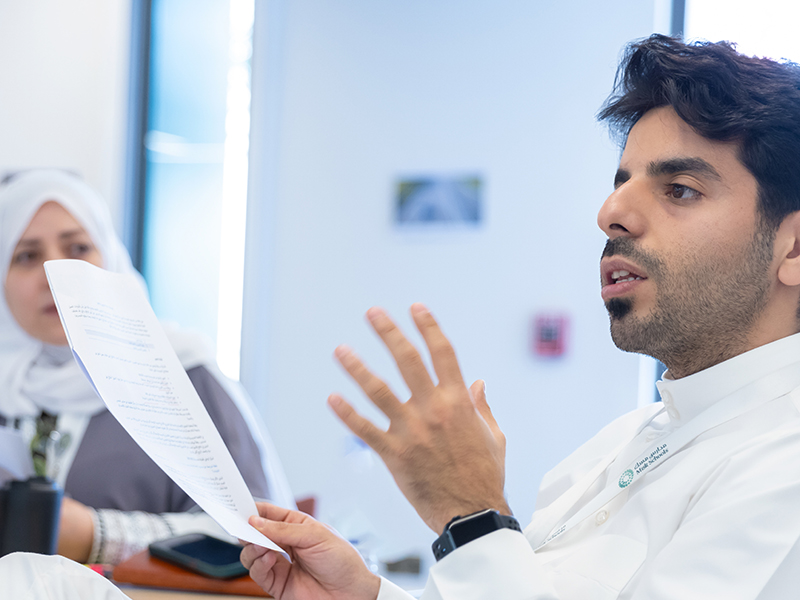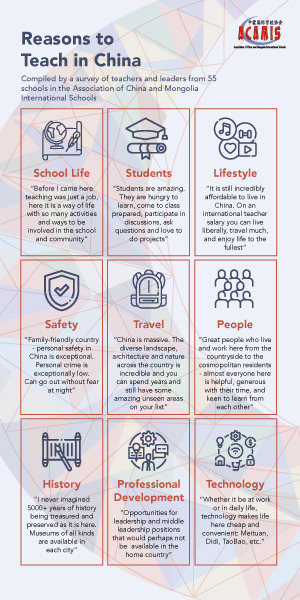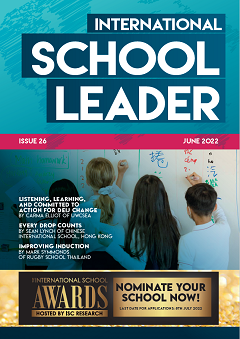By Jeremy Newton
In 2000, just under 1 million students attended international schools around the world. At the end of 2023, that number had grown to 6.9 million (ISC Research 2024). That huge growth in student numbers and schools has meant a corresponding explosion in the number of teachers working in international schools, with staff growth from 90,000 to 664,645 during the same period.
As the international education sector continues to grow exponentially, schools are becoming ever more reliant on recruiting in the countries that they serve. And so they should. The fact that 91% of British international school leaders find recruiting quality teachers ‘somewhat’ or ‘very’ challenging (COBIS 2022 Teacher Supply Report), indicates that the effective recruitment, training and promotion of local talent is one way of developing an effective and well-rounded education for students who learn in English, but live all other aspects of their life in a country with a different language. Appointing staff from the resident country also goes some way to avoiding the significant teacher shortage and recruitment challenges faced by international schools around the world.
However, one problem that often appears in schools with a high proportion of local staff is the difficulty they have in accessing the plethora of professional development opportunities that are only accessible to those with a professional or proficient level of English. There is a solution, which does not seem to be common practice, which is to deliver professional development programmes bilingually.
I came to the realisation that schools appear to be overlooking this solution when, in the summer of 2023, I discovered that here at Misk Schools, we would become the first to offer the well-respected COBIS Programme for Middle Leaders (CPML) bilingually. This experience provided me with valuable insights into how schools may deliver highly reputable courses that are commonly seen as being for English speakers only, to a bilingual staff team.
If this is something that may help develop the professional development programme at your school then I hope the following hints and tips will help clarify what is possible and how you may approach implementing something similar yourself.

Photo: Misk Schools Riyadh, Campus Exterior
Identify the course, approach the provider
This may seem like an obvious place to start, but it was a surprise to me to find that we were the first to ask COBIS if we could deliver one of their courses bilingually. At the time, our school had a clear need to develop a new set of middle leaders after a significant recruitment round. Our curriculum is delivered in English about 60% of the time and in Arabic for the remaining 40%. We therefore have a significant number of Arabic-speaking middle leaders, for whom fluency in English is not essential to their teaching success. We determined that a middle leadership programme would be of great benefit to our new international and local department heads and, having determined which course was most suitable, we picked up the phone.
Develop a relationship
The relationship between the accrediting body and the course provider (your school) can, and should be, mutually beneficial. Developing a course, traditionally taught in English, into a second language, increases the consumer base and reach for the accreditors, whilst simultaneously allowing you to deliver the course in the language that most benefits your school. Find the win-win by collaborating with your accreditors to identify the best way to update, develop and translate the materials. There are key considerations around branding, copyright and intellectual property. In our case, we made it very straightforward: the accreditation body would retain their branding and formatting on all course documents, and we would retain the same content in English and manage the translation into Arabic.
“This created a fully inclusive atmosphere in the course, meaning that speakers of both languages were fully engaged and treated equally.”
Be inclusive
A key factor in the success of our delivery was to plan, prepare and promote the course as being fully bilingual. We offered the same number of places to Arabic and English speakers, the course was facilitated by an English and an Arabic speaker, and every single piece of material from the website to the pre-reading was available in both languages.
This created a fully inclusive atmosphere in the course, meaning that speakers of both languages were fully engaged and treated equally. We purposefully avoided promoting the course as English with translation available, as that was not our point. We wanted the course to be accessible to our entire staff community.
Facilitators, not translators
We wanted to make the programme inclusive so we ensured that both facilitators could deliver the course to a high standard and answer any questions arising from the delegates. This meant that, rather than having an English-speaking facilitator supported by a translator, we had two highly competent facilitators capable of guiding conversations across both languages. This created equity and, by the end of the first few days, we found that the conversations had become bilingual themselves, with speakers of both languages offering viewpoints and perspectives that they were translating within their groups and in open conversation.
Take feedback
We ensured the smooth running of the course by taking open and anonymous feedback daily. This led to useful guidance from the delegates, who were able to provide feedback in both languages and steer the facilitators to make improvements that would enhance the course for all participants. Interestingly, one piece of repeated feedback was to provide more opportunities for open discussion around leadership. We had reservations that the pace of the course would be too slow when time was given to general conversation, especially as translation would be needed after every comment. However, we realised that this was what the delegates appreciated the most.
In summary, delivering high-quality CPD in a bilingual setting is much easier than you may have thought. It may also go a long way to solving some of the recruitment and training problems you face. I would encourage all schools to reflect on whether their current CPD offer is inclusive and equitable for their local talent and, if not, to follow the guidance above.

Jeremy Newton is the Senior Principal at Misk Schools, Riyadh, Saudi Arabia. You can connect with Jeremy on LinkedIn.



